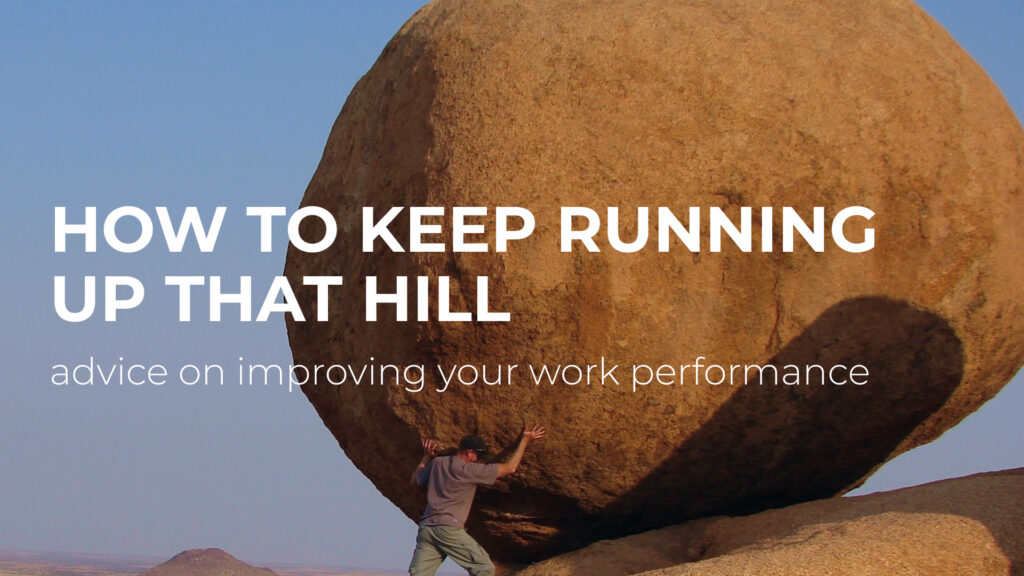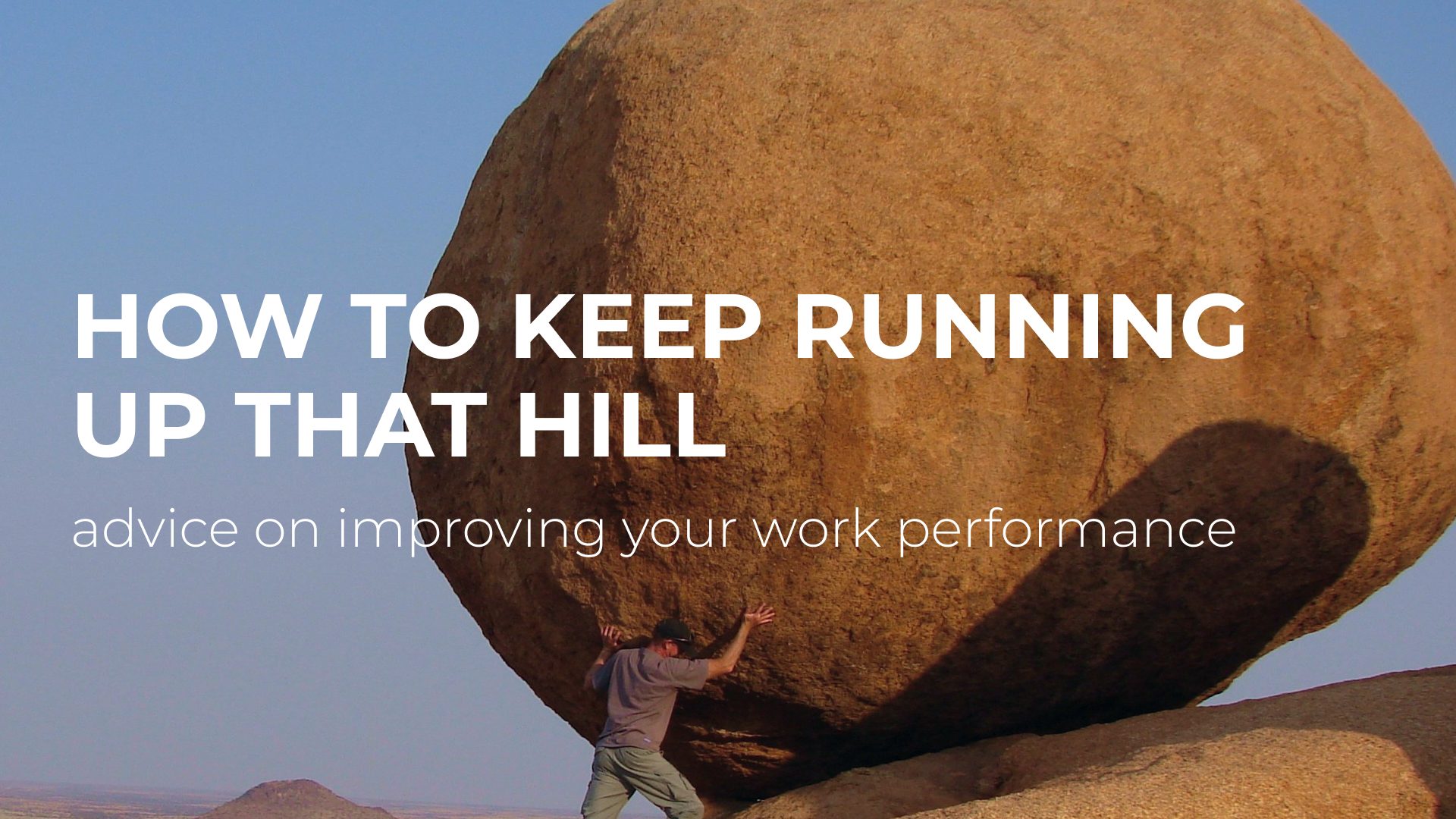Work can be a drag. You stare at your screen, wondering where the day went. The to-do list keeps growing, the deadlines keep burning. Your brain feels like mush. Romanticized as it is, living off caffeine and vibes or procrastinating till your next manic episode aren’t the best strategies.
This article isn’t about working 80-hour weeks or squeezing every second of your day into an efficiency algorithm. It’s about practical, simple ways to work better without burning out. Think of it as your no-BS guide to getting stuff done while still maintaining your sanity.
Table of contents:
Take Good Care of Yourself
Hot take, but before we get into organizers and productivity techniques, we will discuss the usually omitted aspect – you. Your body. Your brain. Your energy. You can’t pour from an empty cup. Especially if that cup is also dehydrated and slept 4 hours last night, trust me.
Never sacrifice sleep
Your brain isn’t a smartphone. You can’t just run it until it dies. Sleep is critical. According to the 2025 Sleep in America Poll®, 58% of people said that not getting enough sleep messes with their productivity. 45% struggle to interact with people or keep their cool in meetings. Oh, and 58% said sleep deprivation makes it hard to get things done without screwing up. So yeah, fixing your sleep schedule is quite a good start.
Eat, drink, and be merry
That fourth cup of coffee isn’t a meal. Neither is that sad vending machine granola bar. Your brain uses 20% of your body’s energy. And if you want it to work alright, feed it actual food. Think of your body like a car. If you keep filling it with junk, it’s going to sputter.
Keep a water bottle at your desk. Dehydration is no joke, buddy – it’s science. Even mild dehydration can reduce cognitive performance by 2%. Drink water like it’s part of your job (because it kind of is).

Shake your bones
“But I don’t have time to exercise!” Yes, you do. A guy named Steve Jobs used to prefer walking during his meetings. And he was definitely onto something – walking can boost your creativity by 60%. Regular movement increases blood flow. And when blood flows, your brain gets the oxygen it needs to focus.
Stand up every hour. Stretch. Do five jumping jacks. Look ridiculous. Who cares? Your productivity matters more than Bob from accounting judging your desk exercises. Or maybe he’s actually considering becoming your new jumping jacks partner? You never know…
Change of Scenery
You can’t expect deep focus in a chaotic space. Here’s some truth about your work environment. First rule: no bed. Working from bed is like asking for distractions. Get out of there! If you’re stuck in a small space, even a dedicated corner with a small desk or table counts. Your brain needs physical boundaries between “work zone” and “sleep zone.” Your productivity (and your lower back) will thank you. Talking about desks, though…
Clean desk = clear mind
Did you know clutter can actually stress you out? According to studies, people working in clean spaces tend to have lower anxiety levels and better mental health. A Princeton University study found that physical clutter competes for your attention, literally reducing your brain’s processing capacity.
Your mess is quietly stealing your brainpower. Those random pens, sticky notes, and three-day-old coffee mugs? They’re destroying your focus one distraction at a time.

The same can be said for all those scattered feedback emails you try to make sense of. So, instead of confusing threads, choose an organized online proofing software – Approval Studio. Feedback? 5 types of annotations right there on the artwork. Versions? All tracked and easily compared in 4 different ways. People? Create groups, assign projects, and invite stakeholders via external review with just a link! Just like the desk, an organized workflow can save you a headache.
Digital hygiene
Every ping, buzz, and banner hijacks your brain’s attention. Turn them off. All of them. The world won’t end if you don’t immediately see that someone liked your comment.
The average person checks their phone 96 times a day. That’s once every 10 minutes of your waking life. Each check derails your train of thought. No wonder you can’t remember what you were just doing.
Try batch processing your notifications and emails. The first few days will feel like withdrawal because, well, it literally is. Your brain is detoxing from its notification addiction. Freedom awaits on the other side. And don’t forget to use “Do Not Disturb” mode!
Deep focus > multitasking
Multitasking is a lie we tell ourselves. Your brain can’t actually do it. According to research, your brain stays partially stuck on the previous task while attempting to engage with the new one. Heavy multitaskers are worse at filtering out irrelevant information and organizing their thoughts. Professor Sophie Leroy from the University of Washington calls this the “attention residue effect” – where your cognitive resources remain split between tasks even after you’ve moved on.
Start with 15 minutes of uninterrupted focus. No phone. No email. Just work. Gradually increase to 45 minutes. It’s like training for a marathon, but for your attention span.
Take Five
Everyone needs a break. Your brain isn’t a computer. It can’t run at 100% all day without crashing. It needs breathers. This may sound weird, but taking breaks makes you get more done, not less. Never underestimate the power of some good rest.
Pomodoro, etc.
The Pomodoro Technique isn’t just Italian-sounding nonsense. Named after those tomato-shaped kitchen timers (pomodoro = tomato in Italian), this method works because it’s realistic about human attention spans. Nobody can focus for 3 hours straight without their brain turning to mush. But 25 minutes? Totally doable.
Work intensely for 25 minutes, then take a 5-minute break. After four rounds, take a longer break. It’s like tricking a toddler into eating vegetables by promising dessert, except the toddler is your adult brain and the vegetables are your actual work.

Touch grass
Science says that looking at green spaces can reduce stress and improve mood. Moreover, you’ll get improved attentional control, working memory, and cognitive flexibility. Meanwhile, urban environments are found to cause attention deficits. Your ancient caveman brain gets freaked out by endless artificial environments. It needs trees, sky, and dirt occasionally to function properly.
No nature nearby? Even looking at pictures of trees can help. Put a plant on your desk, change your desktop wallpaper to a forest, gaze outside the window – tricking your brain works just as well.
No Ballerina Cappucina
Opening TikTok is like stepping into a snare voluntarily. It’s literally social media’s business model to keep you scrolling forever. Getting sucked into your phone is easy, but it’ll only make you feel worse. Social media is a rabbit hole that mentally drains you instead of recharging your energy.
Instead, do the things we’ve already covered – go for a walk, do some exercise, look in the window. A good idea would also be eye exercise. As your eye muscles are constantly focusing on the screen, giving yourself a break from that is a must. Simply look at something 20 feet away for 20 seconds. That’s a great start already.
Customize Your Workflow
Bring your personality to the table. Work doesn’t have to feel like putting on an uncomfortable business persona. Add your style, and suddenly those spreadsheets aren’t just spreadsheets – they are your creations, made in a way that makes sense to your brain. And when you’re effective in your way, work becomes less of a drag and more of a natural extension of who you are.
Bullet lists, color coding, and weekly planning rituals
A good to-do list can transform your chaos into clarity. Use bullet lists to break things down. Color-code your tasks by urgency or project type. Your brain processes visual information faster than text. Use that to your advantage. Even a simple traffic light system – red for urgent, yellow for important-not-urgent, green for “whenever” – can be a real game changer.
Also, planning your week on Sundays? Why not? It clears your mental fog and lets you meet Monday with a plan, not confusion. Go wild with stickers, highlighters, tape – but don’t get too carried away, though. We’re trying to get some work done here, right?

Deal with the hardest things first
Once the big, scary task is done, everything else feels easier. Plus, early wins build momentum for the rest of your day. Oh, trust me – been there, done that. This one task just hangs over you like a dark rainy cloud, giving you crippling anxiety and making you its mental prisoner. Throw off that yoke and breathe freely.
The alternative? Procrastinating on the hard stuff, feeling guilty about it all day, and then either rushing through it poorly at 4:30 PM or pushing it to tomorrow (where the cycle repeats).
Study the retrospective
For a week, note your energy levels and focus throughout the day. When did you crush that difficult task? When did you feel like your brain was moving through molasses? Patterns will emerge that can guide when you should schedule different types of work.
Instead of fighting your natural rhythms, build your schedule around them when possible. If you’re sharpest in the morning, save it for complex problems. If you get a second wind at 4 PM, maybe that’s when you should tackle creative tasks instead of forcing your brain to do that at 9 AM. Track the time, the techniques, the environments – everything can be a good use for building your unique workflow.
Work Smart, Not Hard
You’ve probably heard this a million times, but let’s say it louder for the people in the back. Quantity doesn’t necessarily equal quality. Working smart means being strategic about where you put your energy, recognizing diminishing returns, and knowing when to step away.
Experiment
We’re all wired differently. Some work better with music blasting loudly, some prefer the sheer sound of silence. Some are early birds, and the others are night owls. Therefore, the real productivity trick is getting to know your brain and building systems that work with your quirks.
The key is experimentation. Try different methods, track what actually helps you get stuff done, and ditch whatever doesn’t. Your brain is unique; your workflow should be too.

Reward yourself
Don’t wait for external validation or massive achievements to celebrate. Finished that hardest task ever? Get yourself your favorite sweet treat. The reward doesn’t have to be big – it just has to be pleasant so the brain registers the pattern. Yeah, we’re back to rewiring ourselves. What can I say? Pavlov’s dog was no joke.
Create a reward system that works for you. It could be a walk after completing a difficult task. Or that fancy matcha latte you love. Whatever motivates you.
Perfection is fiction
The notion of perfection was created by humanity. To give us more trouble with standards, as if life’s sunshine and rainbows as it is. Trying to do everything perfectly will burn you out faster than global warming.
That presentation doesn’t need to be flawless, and that email is not going to beat Shakespeare. If the first one communicates information effectively and the second one gets your point across clearly – that’s more than enough. Be kind to yourself and don’t overthink mundane things.
Summing Up
Improving your work performance is no magic trick. It’s just a bunch of simple steps – take care of yourself, create a thriving work environment, take breaks, and apply whatever works best for you. Don’t chase perfection. Chase progress. Try things. Reflect. Adjust. Because the truth is, productivity isn’t about doing more things. It’s about being consistent and doing them right. Now go treat yourself to something for reading this article! You’re one step closer to your aim.

 TEAM SOLUTIONS
TEAM SOLUTIONS WORKFLOW SOLUTIONS
WORKFLOW SOLUTIONS



 REVIEW TOOL
REVIEW TOOL PROJECT MANAGEMENT
PROJECT MANAGEMENT TOOLS & INTEGRATIONS
TOOLS & INTEGRATIONS
 CLIENT INTERVIEWS
CLIENT INTERVIEWS









